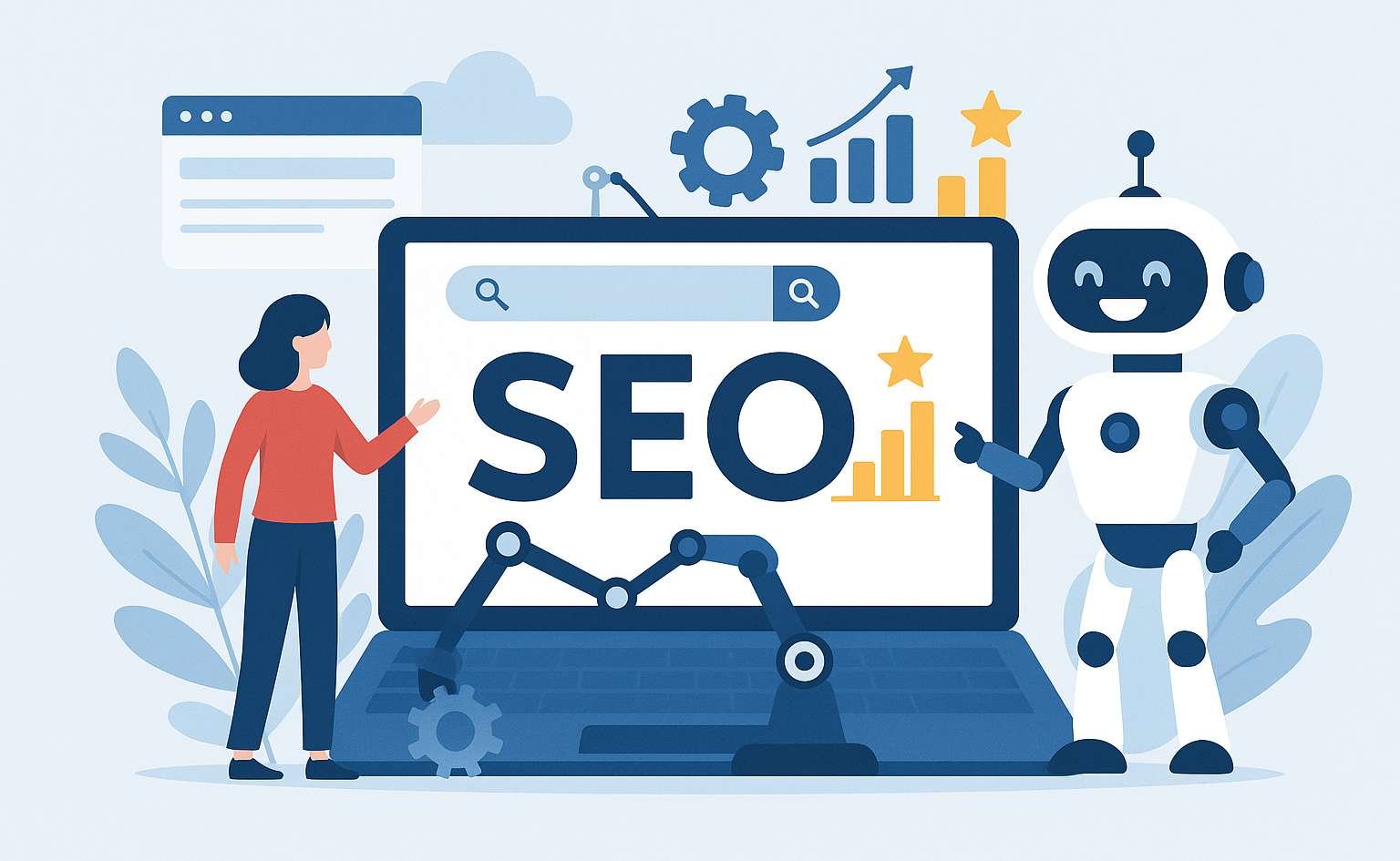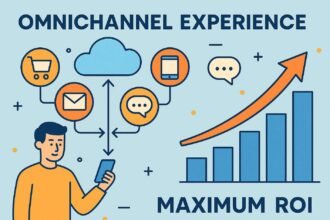Discovering Tomorrow’s SEO Landscape: An In-Depth Exploration
The future is unpredictable, yet certain. Today marks the dawn of the electricity era, the internet age, and the advent of Search Engine Optimization. However, the future of SEO remains uncertain; it may be supplanted by Virtual Reality or Metaverse Optimization. It is indisputably true that SEO, in its present form, will ultimately cease to exist.
An incredible transformation is underway. Indexing is becoming more intelligent and human-centric. Google’s current PageRank formula was established in 1996, and it underpins the ranking of search results with over 300 intricate internet SEO signals. By 2023, an evolutionary leap will have reshaped the formula akin to a quantum leap, introducing a new generation of SEO signals. The secret lies in discerning which signals fluctuate, offset, or exclude content from the coveted first page and how to manipulate them. Next-generation SEO is the express route to securing a spot on Google’s first page.
Decoding Search Engine Algorithms
Google is known for its sophisticated and complex search engine algorithms that help it show the most relevant and reliable search results. The company makes small updates and changes every day, and occasionally it determines that some major algorithm changes are necessary to keep up with the pace of digital innovations and breakneck speed of change. On March 15, 2023, Google released the latest version of its ranking algorithm: Bard. Important Ranking Signals for 2023
Keywords
Keywords are very important ranking signals. Long-tail keywords typically draw less search traffic but will need less effort to improve your rankings or ownership of the identified keywords in the search engine results pages (SERPs). Short-tail keywords can generate massive amounts of traffic and can generally dominate an entire niche. Therefore, they take a lot of time and effort to rank high/highest on the first page of SERPs. Meta Description
Meta descriptions are HTML attributes that provide concise summaries of web pages. They are commonly used on SERPs to display preview snippets for a given page. Meta descriptions can influence click-through rates.
The Transformation of Google’s Algorithms Over Time
Search engine optimization is changing rapidly, and Next Generation techniques are needed to stay ahead of the competition for high-profile keywords. Essentially, the next generation of search engine optimization shortcuts the process of getting a website on the first page of Google, which increases profits and boosts long-term growth.
Next-generation SEO hinges on the latest Google ranking signals in 2023. These signals help create websites that build trust and authority with visitors, brand the business, attract natural backlinks, and perform consistently. Although some ranking signals may change, these new websites continue to rank well.
Essential Ranking Signals for 2023
Ranking Signals: What Google Values in 2023
To reach Google’s first page, you need to understand which ranking signals are most important for SEO in 2023. Knowing what Google values can help you avoid time-wasting strategies and the risk of being penalized. This knowledge also sheds light on how search engine algorithms operate and change over time.
Interest and Experience
googles evaluates ranker experience:P.repRankerExperience governor role in the PageRank algorithm, represents an attention spam filter that prevents unusual Web communities skewing results. It operates at a global level, demoting communities with low relative interest in a particular topic by discounting the entire circle–promoting content that appeals to a more general audience instead. Despite the name, interest in terms of FNC-SPAM doesn’t refer to user engagement, but the idea that stable, established communities are better at rating quality content than new, specialised ones. Interest should be used sparingly as a ranker to avoid discriminating against niche communities.
Engagement
Engagement score also de-ranks low quality content. On a practical level, this means that Google actively detects clickbait, sensationalised tabloids, and spamming mechanism.
Keyword Research and Optimization
Keyword research is essential before optimizing a page. It helps uncover cause-effect relationships in Search Engine Optimization (SEO) and sheds light on why certain pages rank higher on Google. For example, analyzing the keyword “Backlink” can reveal whether searchers are looking to build backlinks, understand backlink benefits, or obtain a dofollow backlink. All these intentions differ, necessitating content tailored to satisfy these diverse needs.
In every search query, a mixing ratio exists. A vast number of searchers seek niche long-tail keywords with specific queries, yet Google attracts visitors with short-tail keywords. Not surprisingly, Google, like any other business, targets the sales of high-volume keywords because this is where money lies and supports the free availability of the search engine. Since ranking for high-volume keywords remains a primary SEO strategy, focusing solely on these can be misleading.
Thought processes differ between focusing on long-tail versus short-tail keywords. Products or services designed for a small number of people, such as a domain-free website, appeal to niche searchers. Ranking for such long-tail keywords is easier, and there tend to be more conversions. Yet, targeting the masses becomes inevitable at some point. Recognizing the importance of ranking for high-volume keywords enables the adoption of a next-generation SEO strategy that accelerates achieving first-page Google visibility.
Identifying High-Value Keywords
Today’s websites cannot simply rely on posting great content, with the expectation that readers will flock to their site. Thousands of other websites are selling similar products or services and, perhaps—if the content is useful enough—taking away some of the target audience’s attention. Google knows that and is fighting to get the best projects and pages on its first page.
That means that users might be using low-visibility projects in order to get what they want. They are not just typing “plumber Ottawa” to find the closest plumber; they are probably using “plumber Ottawa emergency service” or even “plumber Ottawa emergency service for heating, gas and water.” A piece of content optimized for specific keywords—long-tail keywords, in this case—will be more valuable to the user, attracting specific people, ready to convert. On the other hand, although the competition is fiercer for common keywords—known as short-tail keywords—it is ultimately more rewarding to rank for these search terms, simply because more people are searching for them.
Long-Tail Keywords vs. Short-Tail Keywords
Discovering Tomorrow’s SEO Landscape Search engine optimization is continually evolving. What established website rankings yesterday no longer guarantees similar results today. So, how can site operators navigate these requirements and achieve first-page rankings on Google? The answer lies in next-generation SEO. By understanding Google’s search engine algorithm 2023 and key ranking signals, and following a clearly defined step-by-step process, sites can attain top-10 rankings in a fast and pioneering manner.
Decoding Search Engine Algorithms Google’s continual algorithm refinement employs ranking signals such as content quality, backlinks, backlink quality, and site recognition to shape SEO techniques and search results. These methods influence ranking signals, search engine algorithms, online visibility, search rankings, and page A positioning. Next-generation SEO demands a fundamental grasp of search engine algorithm 2023 and key ranking signals, enabling practitioners to use a step-by-step strategy for rapid advancement into Google’s top-10 search results.
On-Page SEO Techniques
Next-Generation SEO: The Fast Track to Achieving Visibility on Google’s First Page
Meta tags, content optimization, and a website visitor’s experience play a pivotal role in next-generation on-page SEO techniques. Meta tags continue to comprise the title tag, description tag, and alt tag. Optimizing title tags, description tags, and alt tags for each page on the website with the head keywords scored highest in the keyword research phase primes the website for better rankings on search results.
Text content within webpage bodies, including headings (H1, H2, H3, etc.), paragraphs, lists, and tables, is typically more important than in-page images or other media, so meta tags should be supported by strong body content incorporating the head keywords. Ranking well for selected keywords justifies the investment of creating well-trained professional content optimized for improving the reader’s website experience. Exceptional user experience keeps visitors on the page for longer, increasing Google’s perception of the page’s relevance.
Meta Tags and Descriptions
Connecting the Next-Generation SEO Guide to Achieving Google’s First Page, the discussion advances from the latest Google algorithms and ranking signals to keyword research and optimization. Meta tags and descriptions pivot on the keywords uncovered during earlier stages. Effective keyword research pinpoints the most valuable terms and phrases—not merely those with substantial traffic, but ones that yield consistent SEO results. Long-tail keywords, for example, typically demand less budget, offer easier ranking, and deliver superior conversion rates in e-commerce.”
Next-generation SEO development activities progress next to on-page SEO, starting with the foundational optimization of meta tags and descriptions that lay the groundwork for further on-page refinements. Meta tags function as the headline for the opening Web page segment. Meta descriptions, in turn, appear beneath the page title on the search engine results page (SERP), capturing the visitor’s gaze and influencing the click decision.
Content Optimization Strategies
Content marketing helps rank new pages, boost older ones and build the website’s topical authority. The following tips highlight content strategies that deliver fast SEO results. Blog Regularly. A blog is a powerful tool for SEO storytelling and building relationships with potential buyers. Write about questions that mirror customers’ thoughts. Document processes, events and case histories. Share the latest company news. Build a Keyword Strategy Around Top Buyer Problems. Analyze top-of-the-funnel search terms associated with the product or service. These offer insight into potential buyers’ core questions and challenges. Approximately 60–70% of a blog strategy typically addresses these queries. Craft Share-Worthy Content. Social signals play a crucial role in influencing algorithms. Craft content that users want to share — newsworthy, controversial, compelling and entertaining.
On-Page SEO indicates a page’s persona to search engines. The following techniques ensure that the bots interpret it correctly. Optimize Meta Tags and Title. Meta tags and title tags comprise the first line of defense in SEO marketing. Aim for a 50–60-character title. Meta descriptions should be under 160 characters. Include the target keyword and create appealing calls to action. Emphasize User Experience. For Google and most search engines, UX takes priority in page rank calculations. The page must be easy to navigate, responsive, fast and visually pleasing. Contents readability and flow are important, too. Search engines look for a clear hierarchy of headings, keywords, hyperlinks and bullet points.
The Importance of User Experience
User experience is not merely an adjunct to on-page SEO—it is at the very heart of content optimization. Meta tags and descriptions wield the power to attract a user’s initial click, but only informative content that satisfies the search intent can retain attention, lower bounce rate, and raise a page’s position in the rankings. User-friendly page layouts, with accessible content and clear calls to action, ensure quick information retrieval and guide visitors logically through a website. Mobile site optimization is crucial for fast load times on any device while improving the site’s appearance for users accustomed to browsing on smart phones.
Google’s continual refinement of its algorithms drives the progression from keyword stuffing to natural textual flow, from link quantity to quality, from link text anchored in a phrase, to topical relevance. Ranking signals in 2023 include website traffic, bounce rate, brand mentions, pages per session, domain and page authority, DA/PA ratios, keywords in domain and subdomains, outbound link quality, media quality, user experience, social engagement, and shopping queries. Anticipating future search queries designed to mimic human conversation, current content marketing strategies encompass the quality of written, video, and image content, entrepreneurial brand identity, community membership, popular topics, geographic focuses, on-site consistency, business density, blog longevity, recently published blog content, blog event awareness, blog popularity, factual data, sponsored blog content, and blog brand alignment.
Off-Page SEO Strategies
Off-page SEO is concerned with links from other websites to your own. Search engines interpret these links as votes of confidence in the quality of your content. Users searching for products or services tend to trust sites that appear on search-page results, which increases the number of visitors. There are many ways to create off-page links, but the most effective is to write compelling content that others want to link to. Guidelines are offered to develop such content.
Backlink juice is an important factor in site ranking. Building quality backlinks is crucial. Social media also plays a role in SEO strategies because it encourages people to share their experiences, which can add credibility and build trust in your company’s offerings. Shareable and engaging content can boost your brand’s visibility through these channels, complementing traditional backlink approaches.
Building Quality Backlinks
Backlinks stand as a major part of search engines’ ranking process. Acquiring good backlinks improves a website’s ranking on the search engine’s result pages. Backlinks are hyperlinks that point to a web page. They connect two websites, allowing users to leave one website and visit another. Backlinks are important because they act as votes of confidence from one website to another. When a website links to another, it’s like saying, “This content is valuable, credible, and useful.”
Properly optimized backlinks drive referral traffic and improve a website’s search engine position. One of the best methods to improve page rank is buying backlinks from a link selling website. It’s important for Google because it helps users find the most relevant and useful information as quickly as possible. Use SEO backlink strategies to improve organic search engine rankings. The more backlinks a web page has, the more popular it is considered.
Social Media Influence on SEO
While the direct impact of social networks on SEO rankings remains a subject of debate, the indirect effects of social media on search engine optimization are undeniably significant. Social media platforms serve as powerful tools for content marketing, enabling content creators to share their articles or products with a vast audience. Substantial engagement—measured through likes, reshares, and discussions—signals to search engines that both content and its source are noteworthy, indirectly influencing rankings. Therefore, social media has evolved into an essential vehicle for content promotion and link building.
Link building represents a critical element in search engine optimization, and acquiring links via social media is relatively straightforward. Crafting an appealing article and disseminating it through platforms like Facebook can lead to a viral surge, prompting others to link back to it. Consequently, a substantial portion of the organic traffic generated by search engines originates, in some way, from content initially broadcast and publicized on social platforms.
Technical SEO Essentials
Technical optimization is vital for boosting site speed, achieving mobile-friendliness, employing schema markup, and correctly implementing canonical URLs. Pages should load in under three seconds to enhance rankings and reduce bounce rates; this can be accomplished by optimizing images, enabling browser caching, minifying code, and using a Content Delivery Network. Mobile-friendliness is crucial due to Google’s mobile-first indexing; responsive design helps cater to diverse screen sizes, and ensuring fast loading on mobile devices is essential. Schema markup, a type of structured data, utilizes the vocabulary developed by Schema.org to provide context to the site’s content, helping Google understand the page’s purpose and therefore rank it more accurately. Canonicalization resolves duplicate content issues that may raise a site’s spam score by directing crawlers to the preferred version of a page using self-referencing canonical tags.
Website Speed and Performance
Website speed is a critical factor in determining search engine rankings. Slow-loading websites not only result in high bounce rates but also fail to impress search engine crawlers. Improving the site speed of available pages can significantly enhance user experience and positively impact rankings. Although Google officially declared that, as of July 2018, page speed has become a ranking factor for mobile searches, the significance of website speed and performance in SEO cannot be overlooked.
The objective for designers and developers should be to produce websites with the fastest possible loading time. Apart from ranking factors, Google considers the quality of the user experience when crawling websites, so improvements in website speed and performance comply with Google’s best practices guidelines. Consequently, if the page of a website loads quickly, more visitors remain engaged. Efficient content delivery ensures that visitors find the desired information without delay.
Mobile Optimization Techniques
Distinct rises in mobile searches render it essential to optimize websites for the user experience on smartphones and tablets. If Google detects that users tend to leave a website very quickly, the search engine will rank low the website. Since mobile users have less patience, small issues such as slower loading or a poorly accessible menu bar will result in de-ranking of the website. Momentum can be quickly lost. Additionally, Google examines the opening speed and overall structure of the website for mobile devices and takes this into account when ranking results. An optimized website must be out-of-the-box responsive and use the latest technologies. Furthermore, advertisements must always be indicated as such and may not interfere with the user experience.
Google strongly recommends the implementation of AMP (Accelerated Mobile Pages). AMP defines a set of focus points for the configuration of mobile versions. This includes loading speed, layout, defined minimum sizes, and other features. For example, AMP pages are always displayed with the lightning bolt icon and users are more likely to click on these pages. AMP pages reduce loading time to below one second: Such loading times play an important role for the ranking with Google. The correct approach, therefore, is to first create a responsive page and only then apply AMP to it.
Structured Data and Schema Markup
Structured data is essential in achieving the highest rankings on Google, especially for voice search. People generally skip over results that appear to be inferior at first glance, so being able to have your content recognized and displayed in a featured snippet or on a knowledge panel can significantly enhance web traffic. To accomplish this, it is necessary to mark content with structured data so that Google understands its intent. The schema.org framework was created to provide a language, a set of tags, that can be implemented on a webpage to communicate with search engines and other crawlers.
Schema markup is code that categorizes and defines the content of a webpage. Search engines crawl webpages and attempt to cluster relevant content, yet their knowledge remains limited. By adding schema markup, the content’s intentions and meanings are revealed. All major search engines collaborated with webmasters to create this unified schema markup standard. Although initially limited in scope, it has been expanded and improved over the years to align with contemporary SEO needs. In the universe of an astronomical increase in content creation on the web, it is essential to assist search engines in finding, understanding, organizing, and displaying the information users are looking for.
Content Marketing and SEO
Content marketing is the strategic approach of creating and distributing valuable, relevant, and consistent content to attract and retain a clearly defined audience, ultimately driving profitable customer action. The essence of this approach lies in producing engaging content that users find interesting and are likely to share, thereby naturally increasing its reach and impact. Blogging exemplifies this strategy effectively; businesses can utilize their websites and blogs to publish content on any topic that resonates with their audience. Visitors who discover the information helpful are inclined to share it, and such content—even if not directly linked to the company’s products or services—can still generate leads. Blogging supports content marketing by enabling regular updates that cater to the audience’s interests and needs.
Integrating content marketing with on-page Search Engine Optimization further enhances a site’s ability to rank higher on search engines. This involves creating content that is not only informative and engaging but also optimized for search visibility. By marrying these two strategies, businesses craft a dual-purpose approach that simultaneously attracts new visitors, educates them, position the company as a valuable resource, and ultimately contributes to improved search engine rankings.
Creating Shareable Content
Thoughtful planning is essential in creating shareable content. Taking time to identify goals, assess the resources available, pinpoint the audience, and determine the distribution channels results in a more focused and efficient experience. The resources that can be used during the process include the original ideas of the creator or organization, additional contributors, visuals, and references. The purpose of the content determines whether it should be entertaining, informative, newsworthy, inspiring, or instructive. The audience should be segmented for magnitude as well as for pre-existing interests. Finally, the distribution channels — such as media, social media, professional networks, and advertisers — can be selected based on the nature of the audience and content.
The first goal in the production phase is to grab attention, and conviction follows when uniqueness, authenticity, freshness, and intrigue combine; a positive emotional response is often the result. Next is to persuade people that what has attracted their attention is worth sharing and, finally, to empower them to share it in a meaningful way. Although the right content can go viral and generate a sudden, colossal rush of activity, big, built-in shared-interest groups usually can create a steady flow of significant traffic over the long term.
The Role of Blogging in SEO
As a strategy for increasing blog visibility on the internet, Search Engine Optimization (SEO) is crucial for company success. Blogging, in terms of content marketing, is one of the most powerful weapons in the SEO arsenal. When company blogs deliver their readers valuable, relevant content on a consistent basis, blogging becomes a method of audience engagement that negatively supercharges SEO.
Beyond the direct impact of blog content additions on the site’s SEO, blogging substantially supports other SEO strategies. Linking new content pieces together strengthens internal optimization, while linking out to other valuable, high-quality sources cultivated familiarity and authority around keywords. These SEO benefits alone make blogging one of the most powerful tools in any marketer’s toolkit. Yet, perhaps equally (if not more) importantly, the practice of blogging supports endeavors to create and promote content that’s powerful enough to earn links from other sites.
Local SEO Strategies
Local SEO is the practice of increasing traffic, brand awareness and presence, and sales for your business by optimizing your brand’s online presence for a specific region. The search engines determine your online presence through various signals close to the user’s search location. These signals include your social profiles, citations, backlinks, Google Business Profile and reviews, social posts, blog posts, and more. Optimizing your Google My Business and Google Business Profile account is often the most effective way to rapidly establish a strong local SEO presence.
By focusing on gaining a variety of citations, backlinks, reviews, posts, and other signals relating to your area and services, your brand can rank in your local area and across the country. Developing a Google My Business account accounts for 30%–40% of the local SEO ranking signal, and it is also one of the fastest ways to establish a presence in the local market.
Optimizing for Local Search
Achieving high search engine rankings for local searches requires a clear understanding of locality keyword research, including knowledge about the most relevant trends and Google’s algorithm updates. Based on this understanding, a local SEO strategy can be crafted and implemented. Studies have shown that a search query containing the terms “location” and “near me” increases by 200 percent every year. In addition, 78 percent of location-based local searches on mobile devices result in an offline purchase. To adopt a sound local search engine optimization strategy, one must select the optimum location and the “near me” keyword to promote the business.
When optimizing for local searches, Google uses signals such as proximity, relevance, and prominence to determine the ranking of a business in the Local Pack search results. Proximity concerns the physical distance between the searcher’s location and the service location. Relevance is about how well the selected radius for the featured services matches the user’s intent. Prominence refers to the authority of the featured business based on its presence in Google’s map database, its local business citations, and backlinks. Practically, location-specific searches require the execution of Local SEO services.
Google My Business Optimization
Google’s business list in the local pack is highly visible and a great way to bring legions of local and organic search traffic to your website. A full Google My Business profile that includes keyword-rich descriptions and high-quality images increases your chances of ranking in local pack results. Regularly posting to your profile can help increase engagement and attract more customers, and responding quickly to questions, messages, and reviews (both positive and negative) shows customers that you appreciate their input.
Use a keyword tool to find location and near me keywords for your Meta Title, Meta Description, and website content. Add location information to your city or area page on your site so people can find you when they’re looking for local products or services. Use local listings to claim and verify your business on sites like Google My Business, Yelp, Bing Places, Apple Maps, and Foursquare, which provide opportunities for people to find your business in search engine results.
Analytics and SEO Performance Tracking
Google Analytics is a website analytics tool that tracks all traffic coming to a website. It also captures information about the traffic, such as their browsers, devices, age, country location, sessions, time spent on the website, bounce rate, and more.
Tracking SEO performance with Analytics and similar tools helps evaluate SEO strategies and provides valuable insights identifying what’s driving organic traffic to the site. Tracking organic traffic helps discover the keywords and pages that are attracting visitors, the highest traffic countries, and other important factors. Checking the bounce rate of each page helps determine the portion of visitors who leave the site after viewing only one page. A high bounce rate may suggest content or backlink issues requiring attention.
Using Google Analytics Effectively
Google Analytics represents one of the most powerful tools available to website owners today. It enables detailed insights into the origin of site traffic, reveals users’ geography and behavior, and much more. Success in search engine optimization without leveraging Google Analytics becomes a challenging endeavor. Achieving high rankings necessitates wisely optimizing the website. Profiling involves recognizing the interests and preferences of users visiting the site and tailoring content accordingly to ensure consistent readership. However, to perform profiling effectively, it is essential to understand their immediate behaviors. Google Analytics provides answers to these questions, further extending its capabilities by allowing targeted campaigns to specific demographic and interest groups.
To gain an overview of the overall performance of a website, metrics such as bounce rate and number of visits are examined, as they partially reflect site popularity. Low user retention on the website is also evident from these figures, suggesting the need to optimize the welcome page for user engagement. Moreover, the keyword analysis tool helps identify how users locate the site, while demographics and interests report modules reveal visitor profiles.
Key Metrics to Monitor
Once a Next-Generation SEO campaign is activated, the next task is to track key performance indicators. As stated in the analytics and SEO performance tracking section, Google Analytics is the most popular and capable product. The software will identify users’ demographics, including sex, age, country, and city, and the time they spend on each page on the website. Google Analytics estimates the bounce rate – the number of people who close the tab with the web page after ten seconds or less. Bounce rate is a measure of the quality of the web page. The higher the reading, the more the web page needs improvement.
The Search Console uses both manual and automated program generation to evaluate a web page’s performance. The software presents the keywords and users’ inquiry type. Also, the browser presents the number of times per day that a web page was viewed. Other statistics include the number of clicks and impressions generated during the day; the percentage of clicks generated by the number of impressions is the click-through rate. Response, loading, and search indices are scored between 0 – 100. When the score is high, more users will be attracted to the scored web page.
Future Trends in SEO
Fast-track your SEO for first-page visibility using next-generation, rather than traditional, SEO methods. By 2025, voice-based searches will account for more than 50% of online queries. Virtual assistants such as Apple’s Siri, Amazon’s Alexa, Microsoft’s Cortana, and Google Assistant will play an essential role in fulfilling such voice search requests. The search engine giant, Google, is focusing on becoming more user/voice-search focused and has integrated artificial intelligence into their search engine to handle conversational queries. Considering these facts, it is clear that businesses ought to optimize their web content for voice search.
Google’s algorithms have become so advanced that they can interpret conversational queries and produce helpful results for users. When optimizing web content for voice search, one must include long-tail keywords or phrases that users might input. This is important, because voice-based queries tend to be longer than text-based queries on a desktop or mobile device. Audiophiles and frequent mobile users who engage the voice assistant while driving, cooking, or performing other tasks intend to receive an instant answer from their assistant. They use phrases such as “near me” or “located in” when searching for products or information.
Voice Search Optimization
Optimizing for voice search represents one of the next biggest SEO challenges and opportunities. Google processes more than 7 billion daily voice searches, and this volume is beginning to overwhelm on-screen search visits. Within a decade, more than half of all searches may be voice-activated. Are your pages optimized to be found on Google’s homepage? Is your business optimized to rank for local voice searches? Given these statistics, voice search clearly sits at the forefront of next-generation SEO.
Dedicated queries for voice search optimization explore the intersection of SEO and voice-related considerations. These directions include active versus passive listening,bot experiences, and digital assistant SEO. For SEO, two of the most significant aspects of voice search involve the use of more natural, conversational language during the query phase and the growing emphasis on providing direct answers to such queries. Both suggest that for SEO’s future success, Google may need to become less applied-mathematics-driven and instead shift toward operating as a more human front-end to a massive logical database.
The Impact of AI on SEO
AI will be able to undertake the time-consuming and repetitive tasks inherent to SEO more rapidly, allowing marketers to focus on areas necessitating human judgment. Furthermore, it will facilitate swift adaptation to Google’s algorithm updates and incorporation of emerging ranking signals. Thus, the successful SEO strategy of the future will combine human creativity with AI-driven productivity.
Google utilises artificial intelligence in ranking websites. Google’s artificial intelligence adapts, which means that its understanding of content is by no means carved in stone and is subject to continuous revision. AI enables the development of new ranking signals or the improvement of existing ones. It can also clarify the role and importance of these signals in the ranking of web pages. Nevertheless, it does not generate a ranking signal ex nihilo; instead, its role is mediated by the transition from past (
Common SEO Mistakes to Avoid
When embarking on a journey toward the first page of Google, some obvious errors in SEO are best avoided to keep the destination beyond the horizon. Four such errors deserve mention. One omission that many webmasters commit, is ignoring the mobile users—the ones who surf the net from their smart phones. A mobile version of the site, or at the very least, a design that works equally well on a mobile phone, will go a long way toward enhancing traffic. Another cardinal error is ignoring Google Analytics, the free tool from Google that provides comprehensive data and statistics of visitors.
Disregarding link-building is a common pitfall not only of next-generation SEO, but of SEO in general. The logic is apparent if one compares the internet to the real world. Suppose a person goes out and meets many people. Admittedly, some of them increase his or her popularity in the society and are important connections of interest, just as many links are required to improve page popularity and ranking. Of course, just meeting people will not necessarily increase a person’s popularity. It depends on who he or she meets. Similarly, the links must be from relevant sites. The idea is extensively expressed in the page authority and domain authority ranking factors.
Overlooking Mobile Users
A first-generation SEO error in 2023 is forgetting about mobile users. By now, everyone should have planned for their website to be browsed on a small screen; otherwise, Google will get angry. Websites that haven’t implemented a responsive layout yet will see a drop in rankings in the upcoming months. With more web traffic coming from mobile devices, Google ranks mobile-friendly sites on top. A responsive layout changes according to the users’ screen size. The layout also adapts, so everything looks nice and is usable on any device, be it a phone, tablet, or desktop.
Another mistake is neglecting analytics data. Google has provided a fantastic tool called Google Analytics. It doesn’t matter if you’re running a blog or an e-commerce website, Analytics quickly reveals important information about visitors: the number of users, which search words brought them to the site, bounce rate, respect for privacy, and much more. With this data, it’s much easier to understand what’s working and what isn’t. Once the data is collected and displayed, users should spend time analyzing the charts, graphs, and tables to see the results of their SEO efforts. Analyzing data provides valuable feedback on performance and areas needing improvement.
Ignoring Analytics Data
It is possible that search marketers may be setting themselves up for a fall by ignoring or not fully utilizing the rapidly increasing, variable amounts of website user data resulting from mobile search growth and new analytics capabilities. In other words, website owners and managers may not be mining the massive volumes and trying out the new forms of site visitor behavior data from a wider range of often unspecified devices, many with very different characteristics.” Google Analytics continues to add new data points, reports, dimensions, metrics and then also presents them in new ways. The amount of new data points and complexity of data is increasing at a rapid rate.
More data—or, more specifically, more eyes on the data—will improve team efficiency and agility. The more people that examine data points, the higher the likelihood of uncovering additional insights and disseminating this knowledge. Employees should be encouraged to venture outside their comfort zone. They need to look beyond what is required to do their immediate job and seek out new ways of leveraging the improving accuracy and increasing volume of data. Those that do will outshine those that merely focus on their assigned tasks. History has shown that big, mind-blowing ideas that eventually lead to vast quantities of money and power are often born from small, seemingly unrelated experiments.”
Case Studies: Successful SEO Campaigns
Achieving high rankings on Google’s first results page is the aspiration of every SEO professional. Examining real examples of well-implemented SEO strategies offers valuable insights and inspiration.
An SEO campaign for a SaaS company illustrates effective use of keyword research and on-page SEO techniques in action. After identifying a list of relevant, high-search-volume, low-competition keywords, optimized content was created incorporating them into headers, titles, meta descriptions, and the main body. The result: the website ascended the rankings, driving targeted traffic and increasing conversions. Other best-practice elements include ensuring URLs are terse and descriptive, setting up campaign tracking parameters in Google Analytics, and optimizing page speed and mobile-friendliness. The campaign’s success derived from a meticulous selection of focus terms combined with high-quality content written with both users and search engines in mind.
Analysis of High-Ranking Websites
Examining the organic search results for a batch of corresponding search queries reveals which SEO practices yield optimized sites for Google in 2023. Of particular interest are the top-ranking sites, as these have mainstream visibility and appear to be Google’s desired ranking target. These look like suitable case studies demonstrating effective SEO. An analysis addresses a dynamic set of search queries in a comprehensive and systematic manner. Such queries apply to the search specialists on PageTraffic. For example, they built “six niche search engine optimized websites” that “started ranking on Google search results pages with highly competitive keywords within 42 days.” A subsequent search using site-specific search operators identifies high-ranking sites across diverse categories. The answer for the best site follows from a landscape of six categories: education, job search, property search, recipe finder, restaurant search and reviews, and travel and vacation planning.
A primary concern is to establish a minimum criterion that bounds the “somewhat competitive keywords” of PageTraffic. Therefore, a set of relevant seed terms (related to the five niche categories) is retrieved. Each category is then associated with a first subset of results, where a subset is composed of the first “forty [URLs] with low CPC and high search volume” that appear in data for any given seed term. Ranking evidence is identified from these static subsets. Sites achieving first-page status (on Google) for at least 3 queries constitute a dynamic subset. Together, the five dynamic subsets generate a set of 13 frequently appearing domains with the proportion of sites that PageTraffic built being notably high at 46.15%. The set of 13 frequently appearing domains functions as a stream of sites. The focus shifts then to a look-ahead scope, which considers the pages in this stream. The aim is to determine the strategies that next-generation SEO should entail in order to achieve first-page visibility on Google.
Lessons Learned from SEO Failures
What lessons do SEO failures teach in practical terms? The often cited answer—embracing next-generation SEO techniques—represents just the beginning. More precisely, SEO failures suggest that savvy business planners turn to search analysis services with keen eye for the latest industry developments and leverage Google analytics to guide firm marketing budgets toward proven strategies.
When potential clients seek a product or service, where do they typically turn first? The quick response—Google’s first page—should logically lead marketers to similar conclusions. While this is by no means new knowledge, a new era in digital marketing demands next-generation tactics to achieve such coveted results. Examining Google’s ever-evolving algorithm and the ring of current Google ranking signals provides essential direction in that endeavor.
Conclusion
Search engine optimization (SEO) has made great strides over the years. What once worked a few years ago is now considered spammy and outdated. It is important to stay up-to-date with the latest changes to maintain rankings on Google’s first page, or to reach the first page in the first place.
Understanding the most recent ranking signals and how Google assesses websites can help companies reach their desired audience. While some foundational aspects of SEO — like keyword research — remain critical, other areas have changed. Although keywords are necessary, their selection must be the right long-tail and short-tail keywords to bring in quality traffic. On-page SEO—meta tags, title tags, descriptions, and content—must be balanced carefully to avoid keyword stuffing while still informing Google about the page’s topic. Off-page SEO, including backlinks and social media, must have the appropriate quantity and quality to convey website authority. Technical SEO—site speed, mobile friendliness, HTTPS, and sitemaps—must also be optimized, as Google prioritizes sites that offer a superior user experience. Every SEO campaign requires these components in the right balance to be effective. Omitting any can risk success, highlighting the interconnected nature of SEO strategies in the first half of 2023.












